
Major League Baseball History |
|
|
When these games reached England, they became classified as “stoolball.” The “pitcher” attempted to hit an upturned stool with a ball before a “batter” could bat it away with a “stick.” Legend has it that when this game moved out of the churchyard and into the countryside, more “stools” or “bases” were added. These bases had to be circled after the ball was struck. This led to the creation of English game “rounders,” and a rule was added. A base runner could be put “out” by being struck with a thrown ball. Imagine that ruled had stayed. You’d have Roger Clemens firing fastballs at rookie infielders, who would run for their lives. Posts called “goals” or “bases” were driven into the ground. The game was called “goal ball” or “base ball” as early as 1700. The first known published mention of the term “base ball” came in a 1744 book, “A Pretty Little Pocket Book,” published in London in 1744. The book included a rhyming description of the game and a picture captioned “Base-Ball.” This book was re-published in the U.S. several times between 1762 and 1787. |
|
1933: Midsummer Classic begins at Comiskey |
|
| American League and National League owners agreed to bring together the game’s greatest during Chicago’s Century of Progress Exhibition in 1933, just in time for Babe Ruth to put on one of his final spectacles. The 38-year-old Bambino smacked a two-run home run to put the Junior Circuit on its way to the inaugural victory. | 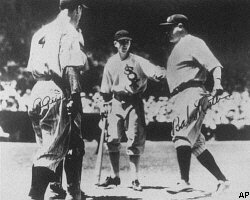 |
1934: Hubbell fans five legends in order |
|
| Giants pitcher Carl Hubbell ended up throwing 313 innings that year, but his three innings in the second Midsummer Classic earned him immortality. The NL starter (pictured here, left, with AL starter Lefty Gomez) fanned Babe Ruth, Lou Gehrig, Jimmie Foxx, Al Simmons and Joe Cronin in order. Pitching in his home park didn’t help the Senior Circuit as the AL won their second successive decision. | 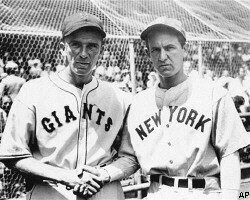 |
1946: Teddy Ballgame crushes a pair |
|
| The All-Star Game resumed after taking 1945 off for World War II, and the boys were glad to be back. None made up for lost time more than Boston’s Ted Williams, back in front of his home crowd at Fenway Park after three years of military service. Teddy Ballgame crushed a pair of home runs, including the first ever hit off Rip Sewell’s “eephus” pitch, as the American League rolled to a 12-0 rout. It marked the final year that managers selected their entire All-Star squads; the fans began selecting the starting lineup in 1947. |  |
1950: Kiner’s HR sets up first extra-innings affair |
|
| The All-Star Game returned to Comiskey Park, where the National League forced the first extra-inning Midsummer Classic. Pittsburgh’s Ralph Kiner tied it with his home run in the top of the ninth and Red Schoendienst provided the game-winning blast in the 14th. Kiner earlier hit a shot that Ted Williams snagged to take away a home run, but Williams broke his elbow crashing into the wall and missed the remainder of the season. | 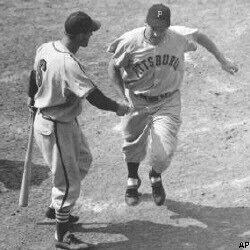 |
1959: Let’s play two |
|
| Fans lost their voting power in 1958 after Cincinnati stormed the ballot boxes for an all-Reds starting lineup the previous year. Baseball tried another short-lived change in 1959 by scheduling two All-Star Games each season. The move was inspired to raise money for the players’ pension fund. The two games were separated by a few weeks except for 1960, when the All-Stars played in New York and Kansas City over a three-day span. | 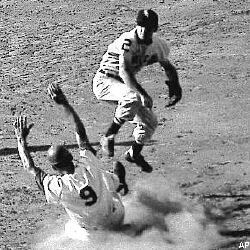 |
1971: Reggie leads slugfest at Tiger Stadium |
|
| Fan balloting returned to the game in 1970, and paid dividends the next season with a fearsome collection of sluggers in a hitter’s paradise — Tiger Stadium. Reggie Jackson’s massive shot (pictured) off Pittsburgh’s Dock Ellis highlighted the home-run reel of Johnny Bench, Hank Aaron, Frank Robinson, Harmon Killebrew and Roberto Clemente. Those legends accounted for all of the game’s scoring, and they all ended up in the Hall of Fame. | 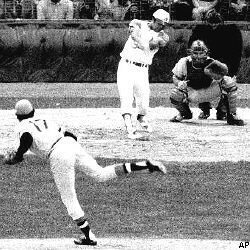 |
1986: The Rocket pitches before home-state fans |
|
| Though Dwight Gooden became the youngest starting pitcher in All-Star history in 1984, Roger Clemens used the Midsummer Classic as a platform on his road to stardom in ’86. Rocket started for the American League in Houston and threw three perfect innings, throwing only three balls in 24 pitches before his home-state fans. NL hurler Fernando Valenzuela tied Carl Hubbell’s record with five consecutive strikeouts but the AL triumphed 3-2, starting a string of pitching duels that lasted into the early ’90s. | 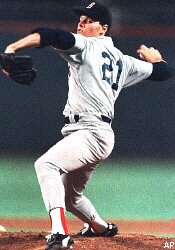 |
1989: Ryan Express returns to Anaheim |
|
| Not to be outdone by 40-year-old National League starter Rick Reuschel, 42-year-old Nolan Ryan fired his patented fastballs through the July heat at Anaheim Stadium, where he pitched for eight seasons with the Angels. Not only was Ryan the oldest player on either side, but the two shutout innings that he threw helped him become the oldest pitcher to ever win a Midsummer Classic. |  |
1993: Kruk faces Big Unit |
|
| It was one of the most memorable at-bats in the history of the Midsummer Classic. John Kruk, the member of the Phillies least likely to finish the game in a clean uniform, stepped into the batter’s box against Randy Johnson, whose first pitch went 95 mph over Kruk’s head and hit the backstop on the fly. Kruk comically bailed out while trying to make contact with the next two pitches. The AL won 9-3 and extended its winnings streak to six. | 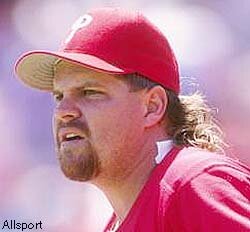 |
1999: Pedro strikes out the side at Fenway |
|
| Moments after Ted Williams 1threw out the first ball in an emotional pre game ceremony, Pedro Martinez pitched himself into the All-Star Game record book by striking out the game’s first three batters: Barry Larkin, Larry Walker and Sammy Sosa. The Boston ace, who had 15 victories at the All-Star break, kept up the streak by striking out Mark McGuire to begin the second inning. The AL won 4-1 and Martinez took him the MVP trophy. | 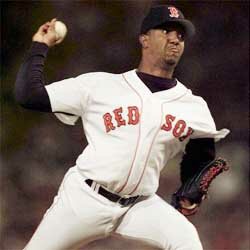 |
